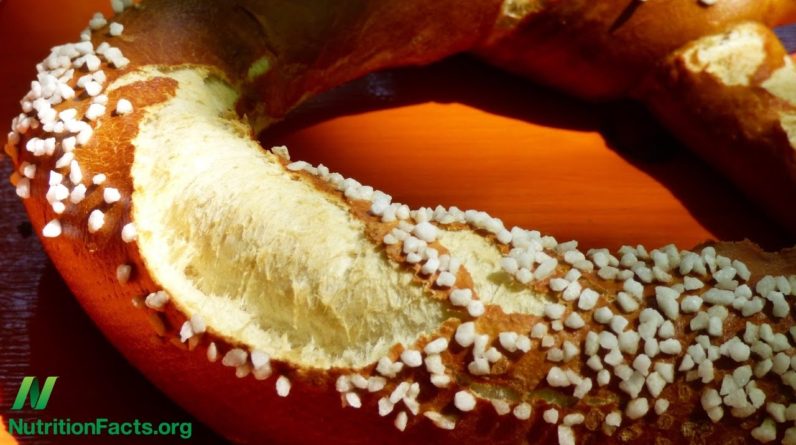
Pretty, pink Himalayan salt has surged in
popularity as a trendy and magical ingredient, but why does it cost so much? And, just as importantly, does it live up
to the hype that's helping to drive up the price? The good news is that yes, humans do need
a certain amount of salt and sodium in their diet, because it plays a key role in maintaining
things like muscle and nerve health, and it also helps maintain balance in the fluids
of your body.
But pink Himalayan salt has been credited
with doing much more than just that, so much that people are willing to pay more for this
magical, mystical pink salt. Listen to the hype and you'll hear that it
can treat the symptoms of respiratory diseases, regulate your blood sugar, increase libido,
reduce the signs of aging, and even help regulate your sleep patterns. "Are you having a bad dream?" "No, I suffer from a disorder called sleep
fighting." "That must be terrible." "Only when i'm losing." It's claimed that even when it's in the form
of a salt lamp it can cleanse the air of pollutants, and even help those suffering from seasonal
affective disorder. That's a pretty wide variety of things it's
reported to help, and it's safe to say that everyone has probably experienced one of those
things on the list, or has a family member who gets what it's like to have some long
and sleepless nights. The thing is, actual scientific evidence that
any of this is actually true is scarce, but it's not going to hurt… right? First, a bit of science.
Salt and sodium aren't the same thing, as
salt is a combination of the ions sodium and chloride. And it really is magical: together, they make
food wonderful and they keep our body functioning. Different types of salt have various amounts
of other minerals, and that's where many people hop on the pink Himalayan salt bandwagon. It's claimed that pink Himalayan salt has
84 trace minerals in it that regular table salt just doesn't have, and internet wisdom
says that's a good thing.
But, like many good things, there's a catch. Nutritionists say those elements and minerals
exist in minuscule amounts, way too small to actually have any kind of impact on our
health. And sometimes, that's a good thing. Among those elements are things like uranium,
radium, polonium, and thallium. There's not enough of those things in the
salt to hurt you, and isn't that proof that there's not enough of the good things to do
any good, either? This is one bit of marketing that raises the
price just because it sounds good. According to Business Insider, people who
live in the areas that mine pink Himalayan salt call it "white gold" which yes, is odd
considering it's pink, but it shows just how valuable it is.

Picking up a bottle can set you back up to
20 times as much as a similar size of regular table salt, and part of the reason for the
price is that it's one of the purest salts in the world. What does that mean, exactly? Most table salt is extracted from rock salt
or halite, or it comes from evaporated sea water.
The problem? When sea water evaporates, it can also leave
behind pollutants. And the salt that's mined from rock often
occurs alongside other chemicals and minerals, some of which are toxic. It's all purified before it hits the shelves,
but pink Himalayan salt is a little different. That comes from crystallized sea-salt beds
that were buried deep underground when they were covered in lava, then snow and ice. Those beds have been around for about 200
million years, and the layers on top of them have protected them from all the horrible
things we've released into the environment in our modern-day world. It's mined by hand and it's unprocessed, and
that all adds up to make it super pure. And that? People are willing to pay for. Legend has it that Himalayan salt was first
discovered by the horses of Alexander the Great in 326 BC.
Horses love salt, after all, and the story
says the army was traveling through what's now northern Pakistan when they noticed their
horses kept licking the rocks. It was centuries before it was traded, but
it's been popular for a lot longer than it's been trending on Instagram. That place where Alexander's horses reportedly
discovered an unexpected treat is still where pink Himalayan salt is mined today. There are only six mines where workers extract
the salt by hand, and that makes it sound rare, doesn't it? It's not — it's estimated that the largest
of those mines, Khewra, contains somewhere around 6.7 billion tons of pink salt, and
around 400,000 tons are mined annually. Knowing that something is only mined in a
single part of the world from a handful of places by a group of workers laboring away
to mine by hand makes it exclusive, and that's enough to justify charging more for it, isn't
it? There's an old saying that looks aren't everything,
but in today's age of social media and Instagram, looks are pretty important — especially
when it comes to food and getting that perfect shot that's going to get more followers.
And that, says The Atlantic, is part of the
reason retailers can charge so much for it — they know people will pay to give their
dishes that extra little bit of trendy and hip. There are tens of thousands of images tagged
#pinksalt on social media, and it's fancying up everything from soaps and lotions to cupcakes,
popcorn, and giant slabs of barbecued meats. Is it worth it? That's up to the consumer. Check out one of our newest videos right here! Plus, even more Mashed videos about your favorite
stuff are coming soon. Subscribe to our YouTube channel and hit the
bell so you don't miss a single one..







